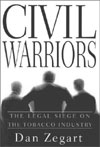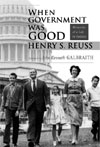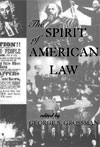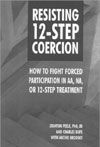Book Reviews
Civil Warriors: The Legal Siege on the
Tobacco Industry
 By Dan Zegart (New York, NY: Dalacorte Press, Dell
Publ., 2000). 368 pgs. $20.76.
By Dan Zegart (New York, NY: Dalacorte Press, Dell
Publ., 2000). 368 pgs. $20.76.
Reviewed by Michael McCann
Appropriately subtitled, Dan Zegart's behind-the-scenes account of
the birth and maturation of tobacco litigation is at once entertaining
and significant. Its cast of characters - including flamboyant
plaintiffs attorneys, cunning defense lawyers, whistleblowers known only
by code names, attorneys general, and a host of sympathetic victims -
rivals many works of fiction. The fact that Zegart's book is a work of
investigative journalism makes its story that much more remarkable.
Civil Warriors revolves around Ron Motley, a veteran of years of
asbestos litigation that made him a multimillionaire and the revered
leader of a large plaintiffs law firm. In 1993 Motley assembled an army
of his high-powered friends to assail the tobacco industry, the nation's
most culpable, but as yet untouchable, collection of corporate
wrongdoers. Writing in a nontechnical style that makes his book suitable
for lawyers and nonlawyers alike, Zegart (who is not a lawyer) traces
the progress of Motley's team from enlisting state attorneys general as
clients, through discovery, several trials, and the dramatic global
settlement negotiations that purported to end the courtroom tobacco
wars. Civil Warriors is an excellent weekend read for anyone curious
about the work and lifestyles of the lawyers who practice high stakes
class action litigation.
In addition to its sheer entertainment value, Zegart's book also
raises several troubling ethical questions. How, for example, are
attorneys to defend a client who continues to perpetrate a large-scale
fraud upon society? How is the scientific community to avoid being
muzzled by an industry that knowingly produces products that kill? And
how are plaintiffs class action attorneys to structure settlements to
benefit themselves and the class members they represent? Although Civil
Warriors does not attempt to answer these questions, it is valuable for
merely having raised them. It would be a fine addition to anyone's
library.
When Government Was Good: Memories of a Life
in Politics
 By Henry S. Reuss; foreword by John Kenneth
Galbraith (Madison, WI: The University of Wisconsin Press,
1999). 185 pgs. $22.95.
By Henry S. Reuss; foreword by John Kenneth
Galbraith (Madison, WI: The University of Wisconsin Press,
1999). 185 pgs. $22.95.
Reviewed by Timothy Kiefer
Henry S. Reuss represented Milwaukee in the US House for 28 years,
from 1955 to 1983. A self-described "cog in our democracy" who never
found national renown, Reuss chaired the House Banking Committee from
1975 through 1983.
The son of an M & I Bank executive, Reuss was born and grew up in
Milwaukee. After earning his law degree at Harvard in 1936, Reuss
practiced law at the Milwaukee firm of Quarles Spence & Quarles (now
Quarles & Brady).
Reuss dedicates his autobiography "to the electors of Wisconsin,
gratefully," but at the beginning of Reuss's political career the voters
did nothing to earn his gratitude. Before finally winning election to
the House in 1954, Reuss lost races for Milwaukee mayor in 1948, state
attorney general in 1950, and US senator in 1952.
Reuss's primary committee assignment was the House Banking Committee,
a committee that Reuss acknowledges "became increasingly irrelevant"
during the 1960s and 1970s. Reuss was elected committee chair in 1975.
He claims that the committee was "reborn" under his leadership, but the
committee remained low-profile, dealing with unglamorous legislation
such as the Depository Institutions Deregulation and Monetary Control
Act of 1980.
After his retirement from Congress in 1983, Reuss practiced law for
three years as a senior partner at a large Washington law firm. He also
became of counsel to the Milwaukee firm of Charne & Tehan. Reuss
claims that he avoided lobbying and instead concentrated on civil
matters such as wills and immigration. While there is no reason to doubt
the strict truth of his claim, the implication that Reuss went back to
being an ordinary lawyer is disingenuous. When he reentered the practice
of law, Reuss was 70 and had not practiced law for three decades. It is
hard to believe that a large Washington law firm would have made him a
partner if it were not for his congressional connections.
Reuss retired from the practice of law in the mid-1980s. In 1995
Reuss and his wife moved to northern California.
When Government Was Good has the virtue of brevity,
compressing 86 years of life into just 185 pages. The book should prove
valuable as a record of Cold War-era politics in Wisconsin and the US
House. Nevertheless, Reuss's decision to wait more than 15 years after
his retirement from Congress to publish his memoirs means that much of
the book is primarily of historical interest.
The Spirit of American Law: An Anthology
 Edited by George S. Grossman (Boulder, CO: Westview Press,
2000). 556 pgs. $19.20.
Edited by George S. Grossman (Boulder, CO: Westview Press,
2000). 556 pgs. $19.20.
Reviewed by Richard E. Garrow
This anthology is a collection of 33 pieces - the work of
approximately 33 writers, and divided into three time frames. The first
two frames begin in 469 BC (Socrates) and end Sept. 26, 1986 (Chief
Justice William H. Rehnquist, oath of office). The elapsed time is 2,455
years.
The Socrates "trial" ended in 399 BC. The charges were corrupting
youth and disrespect of the gods of the City. Some writers say the jury
was 499 persons strong.
Fast forward 1,465 years to Oct. 14, 1066, and William I The
Conqueror's victory at the Battle of Hastings - a good starting point
for Anglo-Saxon law.
In 1627 Sir Edward Coke seems to be lead counsel for several
gentlemen jailed by the King. The suit is known as the case of The Five
Knights. The issue, habeas corpus.
The essay about Sir William Blackstone is of a time not so long ago.
Between 1765 and 1769, Blackstone published 2,000 pages of his work in
four volumes - the Blackstone Commentaries. Harvard, Yale, and Columbia
law schools used the volumes as law text books. The first American
editions were published in 1771-1772.
The anthology's second part begins with the Federal Convention.
Thirty men begin, behind closed doors, on May 25, 1787, to draft a
constitution. Shortly after Sept. 12, 1787, the US Constitution is
completed. At the close of the convention, the members totaled 55 men.
With that many opinions, four or five men came forward and probably took
charge - George Washington, Benjamin Franklin, James Madison, and Thomas
Jefferson, among them. Slavery has been in the world for thousands of
years. Negro slaves reached Virginia in 1619. Additional essays discuss
slavery in two basic themes - economics and the dignity of man.
Wisconsin lawyers should know the Dred Scott case (1857),
secession of states story, and the Plessy v. Ferguson case
(1896). In Plessy the court approved separation of the races as long as
equal facilities are provided for blacks and whites. Every lawyer
understands the doctrine of stare decisis. Years are passing by,
lawsuits are tried, legislative action takes place, and in 1968 Congress
passes one more Civil Rights Act.
Special attention is given to certain Supreme Court justices,
including John Marshall, Oliver Wendell Holmes Jr., Louis D. Brandeis,
Felix Frankfurter, Earl Warren, and William H. Rehnquist.
Attention grabbing for me, having lived through the time, is the
Hoover-Roosevelt era. Roosevelt's Supreme Court packing plan and the
growth of the alphabet government (NIRA, SEC, WPA) reminds us of the
very recent past.
The civility issue, which we talk about now, also is included. The
story of the Chicago Eight trial is about assembly and parade permits
and the charge of intent to cause a riot. Judicial temperament,
courtroom control, and lawyer behavior are features of this case.
The book's last 74 pages (Part III) are for the futurists among
Wisconsin lawyers
The book is a collection of material to read, study, and enjoy an
essay at a time. The time will be well spent. The 33 essays average 15
pages, and I have mentioned very few. I recommend that the book be in
your library.
Resisting 12-Step Coercion
 By
Stanton Peele and Charles Bufe, with Archie Brodsky (Tucson, AZ: See
Sharp Press, 2000). 204 pgs. $11.96.
By
Stanton Peele and Charles Bufe, with Archie Brodsky (Tucson, AZ: See
Sharp Press, 2000). 204 pgs. $11.96.
Reviewed by Maura F.J. Whelan
Resisting 12-Step Coercion: How to Fight Forced Participation in
AA, NA, or 12-Step Treatment responds to the growing trend of
mandated attendance at Alcoholics Anonymous and other 12-step programs
as an element of criminal sentencing. Increasingly, employers also are
requiring such treatment for employees judged to have drug or alcohol
problems. The authors of this volume have spent much of their careers
combatting this practice. Peele has his own Web site devoted to the
topic; Bufe founded the See Sharp Press with the express purpose of
publishing books on this theme.
The authors attack the "coercion" of alcoholics and addicts into
12-step treatment on several fronts. They argue both that the religious
nature of the programs violates the constitutional separation of church
and state and that 12-step treatment programs are ineffective. Further,
they question the fundamental premise of most modern treatment programs:
the disease model of addiction and the addict's need for complete and
permanent abstinence from the addictive substance.
The chapter outlining the faith-based roots of Alcholics Anonymous
and analyzing the continuing religious nature of 12-step programs is the
book's most interesting and compelling. This aspect of the programs has
been the basis for successful court challenges, including a Wisconsin
case, Kerr v. Farrey, 95 F.3d 472 (7th Cir. 1996). The arguments against
the actual efficacy of 12-step programs are less successful, principally
because it is difficult for readers not versed in statistical analysis
to be sure that the authors' assessment of the several studies cited is
accurate and balanced.
The authors do not provide a convincing alternative to the status
quo. They firmly oppose "coercion" from any source - government,
employer, or family - but do not address the resistance of most
substance abusers to entering treatment on their own. The "controlled
drinking therapies" they propose as one alternative are extremely
controversial. Indeed, the leading program of this kind, "Moderation
Management," recently has been renounced by its own leader.
Nevertheless, the present volume is a good starting point for
policymakers seeking a better solution to a problem that consumes
millions of dollars from accidents, crime, medical bills, lost
productivity, and the countless broken lives.
To Review a Book...
The following books are available for review. Please request the book
and writing guidelines from Karlé Lester at the State Bar of
Wisconsin, P.O. Box 7158, Madison, WI 53707-7158, (608) 250-6127, klester@wisbar.org. Reviewers may
keep the book they review. Reviews are published in the order in which
they are received. To purchase any book reviewed in this column, please
visit the State Bar's Web site, www.wisbar.org/bookstore/
for secure online ordering, or contact the publisher, or ask your local
bookstore to order it for you.
Publications and videos available for review
- Asset Protection Planning Guide: A State-of-the-Art Approach
to Integrated Estate Planning, by Barry S. Engel, David L.
Lockwood, Mark Merric (Riverwoods, IL: CCH Inc., 2001). 660
pgs.
- Commercial Arbitration at Its Best: Successful Strategies
for Business Users, by Thomas J. Stipanowich & Peter H.
Kaskell (Chicago, IL: ABA Business Law Section of Dispute
Resolution, 2001). 539 pgs.
- Compensation Plans for Law Firms, 3d Edition,
edited by Jim Cotterman (Chicago, IL: ABA Law Practice
Management Section, 2001). 140 pgs.
- Fair Disclosure & Insider Trading Reforms: Reg. FD, Rule
10b5-1 & 10b5-2, by James Hamilton & Ted
Trautmann (Riverwoods, IL: CCH Inc., 2000). 88 pgs.
- Full Disclosure: The New Lawyer's Must-Read Career Guide, 2d
ed., by Christen Civiletto Carey (New York, NY:
American Lawyer Media, 2001). 299 pgs.
- Game, Set, Match: Winning the Negotiations Game, by
Henry S. Kramer (New York, NY: American Lawyer Media, 2001).
360 pgs.
- The Lochner Court, Myth and Reality: Substantive Due Process
from the 1890s to the 1930s, by Michael J. Phillips
(Westport, CT: Praeger Publishers, 2000). 224 pgs.
- The New Article 9 Uniform Commercial Code, 2d Ed.,
edited by Corinne Cooper (Chicago, IL: ABA Business Law
Section, 2000). 462 pgs.
- Managing Partner 101: A Leadership Guide for Building the
Successful Law Firm, 2d Edition, by Lawrence G. Green
(Chicago, IL: ABA Law Practice Management Section, 2001). 130 pgs.
- Modern Trial Advocacy, Law School Edition, by
Steven Lubet (South Bend, IN: National Institute for Trial
Advocacy, 2000). 453 pgs.
- Objection Overruled: Overcoming Obstacles in the Lawyer Job
Search, by Kathy Morris (Chicago, IL: ABA Career
Resource Center, 2000). 71 pgs.
- OSHA's New Ergonomic Standard: A Cost-Effective Guide to
Complying with the November 2000 Final Rule, by Deborah
Kearney (Rockville, MD: Government Institutes Division, 2001). 300
pgs.
- Practices and Principles: Approaches to Ethical and Legal
Judgment, by Mark Tunick (Princeton, NJ: Princeton
University Press, 2001). 256 pgs.
- Qualified Retirement Plans for Small Businesses: A
Consultative Guide to Plan Design and Compliance, by Barry
R. Milberg (Riverwoods, IL: CCH Inc., 2000). 248 pgs.
- Reflections of a Radical Moderate, by Elliot
Richardson (Boulder, CO: Westview Press, 2000). 284 pgs.
- The Revenge of Brand X: How to Build a Big Time Brand on the
Web or Anywhere Else, by Rob Frankel (Encino, CA: Rob
Frankel, 2000). 272 pgs.
- The Supreme Court, by William H. Rehnquist
(New York, NY: Alfred A. Knopf, 2001). 302 pgs.
- Unbundling Legal Services: A Guide to Delivering Legal
Services a la Carte, by Forrest S. Mosten (Chicago,
IL: ABA Law Practice Management Section, 2000). 176 pgs.
Wisconsin
Lawyer
